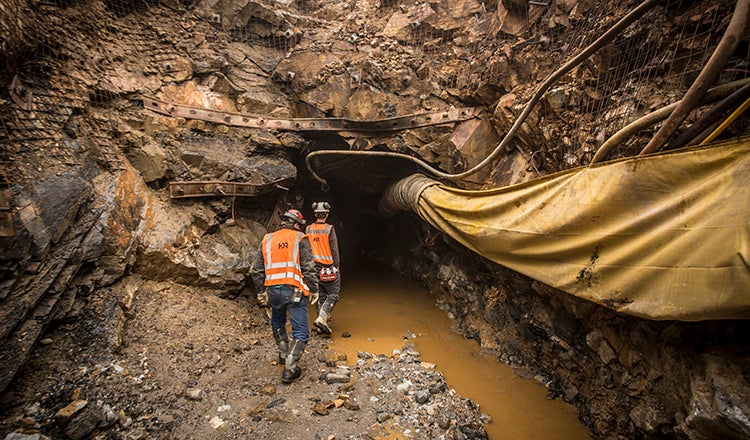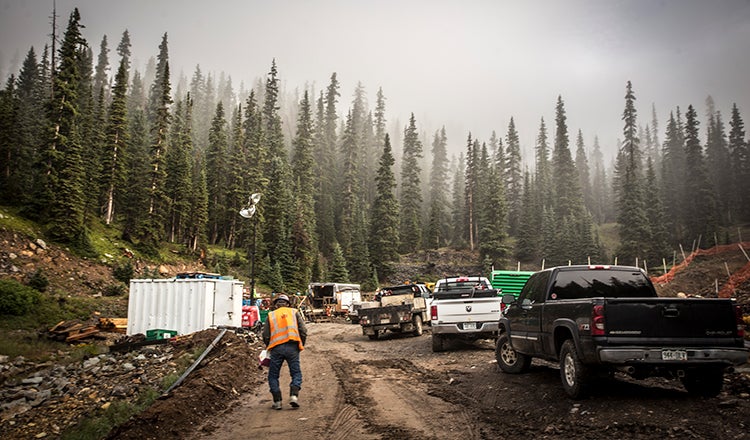
Navigating S-K 1300: 7 Tips for Mining Firms Preparing for IPO
When we received a phone call from a mining client asking for support in preparing a public listing on the New York Stock Exchange (NYSE), our mining team jumped in to help create the S-K 1300 disclosure. Mandated and managed by the U.S. Securities and Exchanges Commission (SEC), an S-K 1300 is a public disclosure for mining and industrial mineral companies publicly traded or attempting an initial public offering (IPO). Companies must compile and report data about their mineral resources and reserves to inform and protect investors.
In this example, we assessed current and planned operations of the client’s existing operation mine sites tied to the S-K 1300 disclosure requirements and provided guidance on the required level of study. We also prepared a workflow for executing the study and developed a technical report summary that leveraged expertise from the client’s team, other consultants and our team. Our program management skills and subject matter experts — aware of both mining and regulatory requirements — provided the foundation for delivering the S-K 1300 on an accelerated schedule to meet the client’s IPO deadline.
No two S-K 1300 submissions are the same, just as no two mine sites are the same. To help get started, our experts Karina Rogers and Brendan Daly share insights to help develop and submit S-K 1300 filings efficiently and on time.
1. Leverage a Knowledgeable Consultant to Manage the Program
If you don't have a dedicated internal resource for the S-K 1300 process, consider embedding a dedicated program manager or consultant into your team to conduct daily and weekly scrums and manage delivery of report sections, technical reviews, and record actions and decisions of all content providers. This role is important to keep the project moving, optimize the schedule and align on actions. Content providers on the owner’s side will include operations, management and the parent company, and there may be multiple external consultants involved. A program manager will be able to bring those teams together and enforce accountability — backed with support from the mining company’s management team — to deliver on S-K 1300 responsibilities, even when the operations team is already busy with their job.
2. Understand Requirements and Timelines Before Setting IPO Dates
The foundational studies for S-K 1300 disclosure (scoping, prefeasibility or feasibility studies summarized in the initial S-K 1300 technical report summary) typically require 4 to 12 months of technical development. Schedules for IPO filings should account for this work. This accommodation also applies to subsequent filings with the SEC, such as when there is a material change to a mine site — like updated resources and reserves estimates or a major capital project at an operating site that materially (by more than 10%) affects the all-in-sustaining costs or internal rate of return. Also, if the mine owner’s parent company is foreign to the United States, additional reporting (Form F-1) is required, which should be considered in the overall filing schedule.
3. For Multisite Clients, Determine Which Sites Are Material
A property is considered material if it accounts for at least 10% of either a company’s revenue or its assets. However, if a company has many mines and none generate more than 5% of its revenue, they are all considered material. Defining the materiality of a company’s sites helps define the scope, study and approach to the work, as well as how the resources and reserves are stated and qualified in the technical report summary.

4. Start the Project Using a Secure Data Platform
This platform will be used for managing and sharing data and should use a structured workflow file system that all team members can follow. Doing so helps maintain consistent workflows, enable version control and ensure necessary reviews and approvals — such as those from technical reviewers, qualified persons and legal teams — are conducted efficiently and properly. The security and management of this platform also helps to protect the integrity of the data and facilitates storage of a complete data set.
5. Confirm Availability of S-K 1300 Qualified Persons
The availability of qualified persons to review technical report summary sections quickly and on-demand is critical to meeting the disclosure schedule. For the S-K 1300 process, the SEC defines a qualified person as a mineral industry professional with at least five years of experience in the type of mineralization and deposit under consideration. A qualified person also should be an eligible member or licensee in good standing of a recognized professional organization. In addition to the initial report, the time it takes to respond to questions after submitting the technical report summary to the SEC should also be considered. The responsibilities and availability of a qualified person should be actively discussed and agreed to during project kickoff.
6. Set a Realistic Plan and Schedule
Include core and geotechnical drilling, logging, quality assurance and quality control, and technical assessments with adequate float to meet your IPO timeline. Factors such as weather, contractor availability, potential redrilling, lab capacity, and quality assurance and control variability often impact timelines. Including float in the schedule helps prevent overspending on operating capital, IPO delays, or reduced resource and reserve statements.
7. Create Guidance Documents
This should include defining workflow, expectation, decisions and actions, and be shared with all contributors and qualified persons. The documents support the project’s common expectations on content, technical and qualified person review, as well as needs to meet all reporting requirements.

To manage your S-K 1300 process successfully, it's important to have an internal resource or consultant like HDR with program management skills and subject matter knowledge as well as experience in global regulatory reporting to security commissions like the SEC. HDR supports mining companies from IPO to annual reporting, and our team and tools can be applied with agility to smaller mine sites, like sand and gravel, as well as mine owners who have multiple assets through hundreds of sites. We regularly integrate with client teams and consultants to effectively deliver S-K 1300 reporting and schedule needs.





